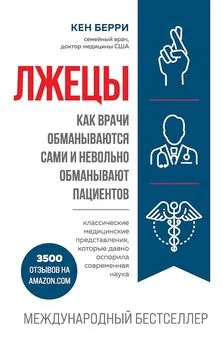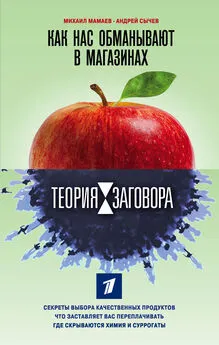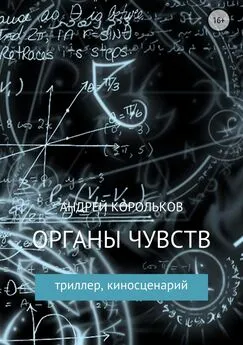Дональд Хоффман - Как нас обманывают органы чувств
- Название:Как нас обманывают органы чувств
- Автор:
- Жанр:
- Издательство:неизвестно
- Год:2022
- Город:Москва
- ISBN:978-5-17-150161-7
- Рейтинг:
- Избранное:Добавить в избранное
-
Отзывы:
-
Ваша оценка:
Дональд Хоффман - Как нас обманывают органы чувств краткое содержание
Мы видим мчащийся автомобиль, но не перебегаем перед ним дорогу; мы видим плесень на хлебе, но не едим его. По мнению автора, все эти впечатления не являются объективной реальностью. Последствия такого восприятия огромны: модельеры шьют более приятные к восприятию силуэты, а в рекламных кампаниях используются определенные цвета, чтобы захватить наше внимание. Только исказив реальность, мы можем легко и безопасно перемещаться по миру.
Дональд Дэвид Хоффман – американский когнитивный психолог и автор научно-популярных книг. Он является профессором кафедры когнитивных наук Калифорнийского университета, совмещая работу на кафедрах философии и логики. Его исследования в области восприятия, эволюции и сознания получили премию Троланда Национальной академии наук США.
Как нас обманывают органы чувств - читать онлайн бесплатно ознакомительный отрывок
Интервал:
Закладка:
64
Gangestad, S. W., Thornhill, R., and Garver-Apgar, C. E. 2005. “Women’s sexual interests across the ovulatory cycle depend on primary partner developmental instability,” Proceedings of the Royal Society of London B 272: 2023–27; Haselton, M. G., and Gangestad, S. W. 2006. “Conditional expression of women’s desires and men’s mate guarding across the ovulatory cycle,” Hormones and Behavior 49: 509–18; Pillsworth, E., and Haselton, M. 2006. “Male sexual attractiveness predicts differential ovulatory shifts in female extra-pair attraction and male mate retention,” Evolution and Human Behavior 27: 247–58. MHC genes: Garver-Apgar, C. E., Gangestad, S. W., Thornhill, R., Miller, R. D., and Olp, J. J. 2006. “Major histocompatibility complex alleles, sexual responsivity, and unfaithfulness in romantic couples,” Psychological Science 17: 830–35.
65
Bradley, M. M., Miccoli, L., Escrig, M. A., and Lang, P. J. 2008. “The pupil as a measure of emotional arousal and autonomic activation,” Psychophysiology 45: 602–7; Steinhauer, S. R., Siegle, G. S., Condray, R., and Pless, M. 2004. “Sympathetic and parasympathetic innervation of pupillary dilation during sustained processing,” International Journal of Psychophysiology 52: 77–86.
66
Van Gerven, P. W. M., Paas, F., Van Merriënboer, J. J. G., and Schmidt, H. G. 2004. “Memory load and the cognitive pupillary response in aging,” Psychophysiology 41(2): 167–74; Morris, S. K., Granholm, E., Sarkin, A. J., and Jeste, D. V. 1997. “Effects of schizophrenia and aging on pupillographic measures of working memory,” Schizophrenia Research 27: 119–28; Winn, B., Whitaker, D., Elliott, D. B., and Phillips, N. J. 1994. “Factors affecting light-adapted pupil size in normal human subjects,” Investigative Ophthalmology & Visual Science (March 1994) 35: 1132–37.
67
Tombs, S., and Silverman, I. 2004. “Pupillometry: A sexual selection approach,” Evolution and Human Behavior 25: 221–28.
68
Wiseman, R., and Watt, C. 2010. “Judging a book by its cover: The unconscious influence of pupil size on consumer choice,” Perception 39: 1417–19.
69
Laeng, B., and Falkenberg, L. 2007. “Women’s pupillary responses to sexually significant others during the hormonal cycle,” Hormones and Behavior 52: 520–30.
70
Sammaknejad, N. 2012. “Facial attractiveness: The role of iris size, pupil size, and scleral color.” PhD diss., University of California – Irvine.
71
Caryl, P. G., Bean, J. E., Smallwood, E. B., Barron, J. C., Tully, L., and Allerhand, M. 2008. “Women’s preference for male pupil-size: Effects of conception risk, socio-sexuality and relationship status,” Personality and Individual Differences 46: 503–8.
72
Caryl, P. G., Bean, J. E., Smallwood, E. B., Barron, J. C., Tully, L., and Allerhand, M. 2008. “Women’s preference for male pupil-size: Effects of conception risk, socio-sexuality and relationship status,” Personality and Individual Differences 46: 503–8.
73
Kobayashi, H., and Kohshima, S. 2001. “Unique morphology of the human eye and its adaptive meaning: Comparative studies on external morphology of the primate eye,” Journal of Human Evolution 40: 419–35; Hinde, R. A., and Rowell, T. E. 1962. “Communication by posture and facial expression in the rhesus monkey,” Proceedings of the Zoological Society of London 138: 1–21.
74
Provine, R. R., Cabrera, M. O., Brocato, N. W., and Krosnowski, K. A. 2011. “When the whites of the eyes are red: A uniquely human cue,” Ethology 117: 1–5.
75
Gründl, M., Knoll, S., Eisenmann-Klein, M., and Prantl, L. 2012. “The blue-eyes stereotype: Do eye color, pupil diameter, and scleral color affect attractiveness?” Aesthetic Plastic Surgery 36: 234–40; Provine, R. R., Cabrera, M. O., and Nave-Blodgett, J. 2013. “Red, yellow, and super-white sclera: Uniquely human cues for healthiness, attractiveness, and age,” Human Nature 24: 126–36.
76
Watson, P. G., and Young, R. D. 2004. “Scleral structure, organization and disease. A review,” Experimental Eye Research 78: 609–23.
77
Sammaknejad, N. 2012. “Facial attractiveness: The role of iris size, pupil size, and scleral color.” PhD diss., University of California – Irvine.
78
Goto, E. 2006. “The brilliant beauty of the eye: Light reflex from the cornea and tear film,” Cornea 25 (Suppl 1): S78–81; Goto, E., Dogru, M., Sato, E. A., Matsumoto, Y., Takano, Y., and Tsubota, K. 2011. “The sparkle of the eye: The impact of ocular surface wetness on corneal light reflection,” American Journal of Ophthalmology151: 691–96; Korb, D. R., Craig, J. P., Doughty, M., Guillon, J. P., Smith, G., and Tomlinson, A. 2002. The Tear Film: Structure, Function and Clinical Examination (Oxford, UK: Butterworth-Heinemann).
79
Goto, E. 2006. “The brilliant beauty of the eye: Light reflex from the cornea and tear film,” Cornea 25 (Suppl 1): S78–81; Goto, E., Dogru, M., Sato, E. A., Matsumoto, Y., Takano, Y., and Tsubota, K. 2011. “The sparkle of the eye: The impact of ocular surface wetness on corneal light reflection,” American Journal of Ophthalmology151: 691–96; Korb, D. R., Craig, J. P., Doughty, M., Guillon, J. P., Smith, G., and Tomlinson, A. 2002. The Tear Film: Structure, Function and Clinical Examination (Oxford, UK: Butterworth-Heinemann).
80
Breakfield, M. P., Gates, J., Keys, D., Kesbeke, F., Wijngaarden, J. P., Monteiro, A., French, V., and Carroll, S. B. 1996. “Development, plasticity and evolution of butterfly eyespot patterns,” Nature 384: 236–42; French, V., and Breakfield, P. M. 1992. “The development of eyespot patterns on butterfly wings: Morphogen sources or sinks?” Development 116: 103–9; Keys, D. N., Lewis, D. L., Selegue, J. E., Pearson, B. J., Goodrich, L. V., Johnson R. L., Gates, J., Scott, M. P., and Carroll, S. B. 1999. “Recruitment of a hedgehog regulatory circuit in butterfly eyespot evolution,” Science 283: 532–34; Monteiro, A. 2015. “Origin, development, and evolution of butterfly eyespots,” Annual Review of Entomology 60: 253–71; Reed, R. D., and Serfas, M. S. 2004. “Butterfly wing pattern evolution is associated with changes in a Notch/Distal-less temporal pattern formation process,” Current Biology 14: 1159–66.
81
Costanzo, K., and Monteiro, A. 2007. “The use of chemical and visual cues in female choice in the butterfly Bicyclus anynana,” Proceedings of the Royal Society B 274: 845–51; Robertson, K. A., and Monteiro, A. 2005. “Female Bicyclus anynana butterflies choose males on the basis of their dorsal UV-reflective eyespot pupils,” Proceedings of the Royal Society B 272: 1541–46.
82
Zahavi, A. 1975. “Mate selection – A selection for a handicap,” Journal of Theoretical Biology 53(1): 205–14; Zahavi, A., and Zahavi, A. 1997. The Handicap Principle: A Missing Piece of Darwin’s Puzzle (Oxford, UK: Oxford University Press); Koch, N. 2011. “A mathematical analysis of the evolution of human mate choice traits: Implications for evolutionary psychologists,” Journal of Evolutionary Psychology 9(3): 219–47.
83
Hamilton, W. 1964. “The genetical evolution of social behaviour. I,” Journal of Theoretical Biology 7(1): 1–16; Marshall, J. A. R. 2015. Social Evolution and Inclusive Fitness Theory: An Introduction (Princeton, NJ: Princeton University Press). Критику совокупной приспособленности можно почитать у Nowak, M. A., Tarnita, C. E., and Wilson, E. O. 2010. “The evolution of eusociality,” Nature 466: 1057–62; Wilson, E. O. 2012. The Social Conquest of Earth. New York: Liveright.
84
Mateo, J. M. 1996. “The development of alarm-call response behavior in free-living juvenile Belding’s ground squirrels,” Animal Behaviour 52: 489–505.
85
Dawkins, R. 1979. “12 Misunderstandings of kin selection,” Zeitschrift für Tierpsychologie 51: 184–200; Park, J. H. 2007. “Persistent misunderstandings of inclusive fitness and kin selection: Their ubiquitous appearance in social psychology textbooks,” Evolutionary Psychology 5(4): 860–73; West, S. A., Mouden, C. E., and Gardner, A. 2011. “Sixteen common misconceptions about the evolution of cooperation in humans,” Evolution and Social Behaviour 32: 231–62.
86
Dal Martello, M. F., and Maloney, L. T. 2010. “Lateralization of kin recognition signals in the human face,” Journal of Vision 10(8):9 1–10; Dal Martello, M. F., DeBruine, L. M., and Maloney, L. T. 2015. “Allocentric kin recognition is not affected by facial inversion.” Journal of Vision 15(13):5 1–11; Maloney, L. T., and Dal Martello, M. F. 2006. “Kin recognition and the perceived facial similarity of children,” Journal of Vision 6(10): 1047–56.
87
Buss, D. M. 2016. Evolutionary Psychology: The New Science of the Mind (New York: Routledge); Etcoff, N. 1999. Survival of the Prettiest: The Science of Beauty (New York: Anchor Books, Random House); Perrett, D. 2010. In Your Face: The New Science of Human Attraction (New York: Palgrave McMillan). Аргументы о том, что наши рейтинги внешней привлекательности зависят не от генов, а от различий во внешних обстоятельствах, который у каждого свои, можно посмотреть в статье Germine, L., Russell, R., Bronstad, P. M., Blokland, G. A. M., Smoller, J. W., Kwok, H., Anthony, S. E., Nakayama, K., Rhodes, G., and Wilmer, J. B. 2015. “Individual aesthetic preferences for faces are shaped mostly by environments, not genes,” Current Biology 25: 2684–89.
88
Hoffman, D. D. 1998. Visual Intelligence: How We Create What We See (New York: W. W. Norton); Knill, D. C., and Richards W. A., eds. 1996. Perception as Bayesian Inference (Cambridge, UK: Cambridge University Press); Palmer, S. 1999. Vision Science: Photons to Phenomenology (Cambridge, MA: MIT Press); Пинкер С. Как работает мозг/пер. О.Ю. Семиной – Москва: Кучково поле, 2017 г. – 672 с.
89
Geisler, W. S., and Diehl, R. L. 2002. “Bayesian natural selection and the evolution of perceptual systems,” Philosophical Transactions of the Royal Society of London B 357: 419–48.
90
Geisler, W. S., and Diehl, R. L. 2003. “A Bayesian approach to the evolution of perceptual and cognitive systems,” Cognitive Science 27: 379–402.
91
Trivers, R. L. 2011. The Folly of Fools: The Logic of Deceit and Self-Deception in Human Life (New York: Basic Books).
92
Noë, A., and O’Regan, J. K. 2002. “On the brain-basis of visual consciousness: A sensorimotor account,” in A. Noë and E. Thompson, eds., Vision and Mind: Selected Readings in the Philosophy of Perception (Cambridge, MA: MIT Press), 567–98; O’Regan, J. K., and Noë, A. 2001. “A sensorimotor account of vision and visual consciousness,” Behavioral and Brain Sciences 24: 939–1031. Их идеи похожи на идеи Гибсона, который полагал, что мы воспринимаем напрямую, без обработки, аспекты окружающей среды, критичные для выживания, такие как «аффордансы» – все возможности активного действия, которые предоставляет индивиду внешняя среда. Gibson, J. J. 1950. The Perception of the Visual World (Boston: Houghton Mifflin); Gibson, J. J. 1960. The Concept of the Stimulus in Psychology, The American Psychologist 15/1960, 694–703; Gibson, J. J. 1966. The Senses Considered as Perceptual Systems (Boston: Houghton Mifflin); Гибсон Дж. Дж. Экологический подход к зрительному восприятию/пер. Т.М. Сокольской – Москва: Прогресс, 1988 г. – 464 с.
Читать дальшеИнтервал:
Закладка:



![Элис Хоффман - Верная [litres]](/books/1059188/elis-hoffman-vernaya-litres.webp)






